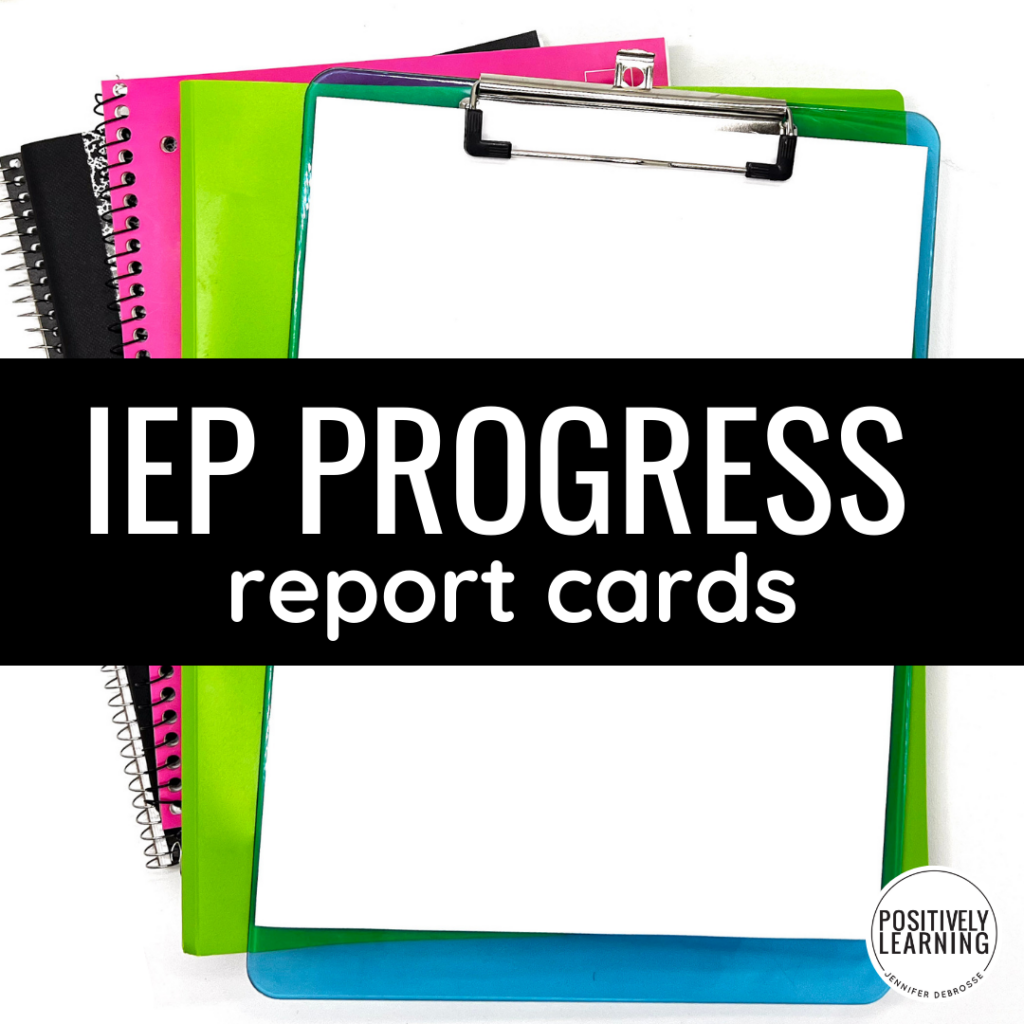
Welcome! I'm not sure how you found this blogpost, but it probably had something to do with googling “What do I need to include in IEP progress reports?” or “How do I write report card statements?”
Either way, you're in the right place!

Table of Contents
ToggleWhen we talk about a student's progress in the context of special education, we are often referring to their IEP Progress Report. This is a document that tracks a student's journey towards their annual IEP goals. While standard report cards provide a snapshot of a student's academic skill in various subject areas, the IEP progress report delves into specific information regarding the child’s progress towards their individualized education program (IEP) goals.
Each student's IEP lays out measurable IEP goals that are based on the child’s present levels of academic and functional performance. These goals are crafted by the IEP team, which consists of school personnel, special education teachers, service providers, and parents of students.
But how do we determine the effectiveness of our plan in achieving these goals?
Enter progress monitoring. This is a systematic way of checking in on student progress. Through objective measures of the specific goal, teacher observation, and data collection, special educators get a clear view of the student's current performance. Tools like performance tasks, check for understanding, work samples, and checklists might be used to gather data points, helping educators make valid decisions about instructional changes.
School districts are required to provide families of children receiving special education services with periodic reports of their child’s progress. The frequency of these reports usually aligns with the issuance of report cards in the school system, ensuring parents receive regular reports about their child’s journey. In the IEP document, there's a section or checkbox indicated the frequency of reports. IEP progress reports are not just helpful, they are mandatory!
We all know the importance of IEP progress reports, but that doesn't mean they are simple or quick to create.
Or are they?
After many years of spending endless hours of writing a caseload of progress reports every quarter, it started to feel a bit like déjà vu! So, I thought, “There has to be a better way” and started leaning into some shortcuts, like grab-and-go progress report phrases and a report card comment bank.
Not only has this saved me heaps of time, but it's also made sharing updates with families a breeze — clear, to the point, and always friendly. If this sounds like a good plan to you, check out the IEP Report Card Comments Bank:
IEP Progress Report Cards are more than just a formality. They provide a roadmap for understanding a student's progress, making appropriate instructional decisions, and offering the right supports.
As the school year unfolds, these reports become a testament to the hard work put in by both educators and students. They're a great way to celebrate achievements, identify areas of improvement, and chart the way forward!

I’m Jennifer and I was a special educator in the elementary school setting over the past decade. I entered the classroom every day dedicated to making learning inclusive AND engaging.










This website uses cookies to ensure you get the best experience on our website. See full disclosure here.
This website uses cookies to ensure you get the best experience on our website.
See full disclosure here.